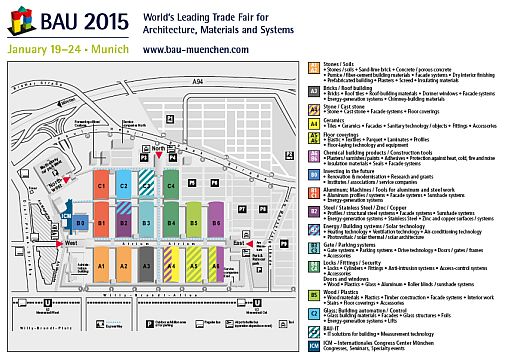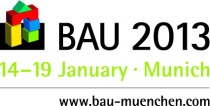Bau 2015: Three key themes set the tone
Three key themes will be exercising minds at and in the run-up to Bau 2015. Many exhibitors will be shaping their presentations to match and showcasing corresponding solutions. In the forums at the show, architects, construction engineers and project developers will be exploring and debating the key themes from a range of perspectives. And, in the special shows at Bau, the themes will be illustrated through examples of products and projects.
Intelligent Urbanization
Expanding and ever-changing urban areas will have a decisive impact on development in the 21st century. Because the struggle to ensure a future that is ecologically sustainable is being fought mainly in the cities. Around two-thirds of the world´s population will be concentrated in urban areas by the year 2025. At the same time the latest extrapolations predict a rise in primary energy demand of around 50 percent and, as a result, a further rise in carbon emissions.
What does all this mean for the cities of tomorrow? It means that a whole host of different aspects have to be taken into account, at the planning, construction and operation stages. These include demographic change, greater pressure on resources, a shift in traditional ideas on value-creation, increasing climate fluctuation and the effects this has, clean energy and the resulting changes to mobility. Added to this are the new opportunities resulting from advancing digitalization and the increasing desire of citizens to be involved in the planning and development processes affecting their environment.
All these demands can only be met through an integrated approach between urban planning, architecture and building technology and systems. The vision of a "carbon-neutral, energy-efficient and climate-adapted city" can be achieved if there is also a concerted drive to increase the energy-efficiency of existing buildings and production facilities, to restructure transport and mobility in such a way that is future-capable and sustainable, and to expand intelligent energy networks.
The biggest challenge will be to lay down strategic and long-term policies that take into account the developments that are already evident, and are capable of anticipating future change in a flexible way. For this our cities have to be viewed holistically, as an integrated system.
Buildings and Users
People in Central Europe spend over 80 percent of their time in offices or other interior spaces. It has been proven that the conditions in these spaces - thermal, hygienic, lighting, acoustic and even olfactory - can significantly affect the way we think and feel, our motivation and how we interact.
It follows that poor conditions impair our performance on all these counts, and for a company, that spells a weaker business performance. Considering, for example, that around 80 to 90 percent of the information a person takes in, is via the eye, then it is only logical that great attention should be paid to the design and planning of our visual environment.
Practical solutions for improving buildings and interiors for their human users are therefore gaining ground. Innovative ventilation systems with integrated, automated controls to optimize indoor comfort have a considerable advantage over manual systems, and they are seen as the way forward. And in heating and cooling, there are already intelligent systems that exploit passive energy for natural cooling and ventilation, and use waste heat from one system to drive another.
Another important factor in the indoor environment is noise and the need to reduce it. Sound-absorbing building materials, for example, are now a standard feature in many offices.
Energy- and Ressource-Efficiency
Demographic change, dwindling resources, clean energy and globalization will all present significant challenges to the economy and society in the coming years. For companies as well as for private households what´s needed are innovative solutions in the way we use resources and energy.
Given that raw-material and energy costs will rise, the only companies that will be able to survive in the market are those that use materials and energy efficiently and sustainably. In architecture and construction, too, attention will have to focus on new technologies and building materials: Low-energy and passive buildings are already state of the art, and the trend towards the "Efficiency House Plus", or house that produces more energy than it consumes, is continuing apace.
When assessing the overall ecological and sustainability credentials of buildings, then other factors also come into play: for example, the insulation materials used in their construction, technologies for the recycling of building materials and minimally invasive methods for modernizing existing buildings.
The development of new, integrated facade concepts and efficient energy-supply models for individual buildings, even entire urban areas, are logical and necessary steps on the road to the future of building.
New tools for analysis and calculation, and intelligent software, are already supporting architects and developers in the design stages, to ensure cost- and energy-efficient buildings.



